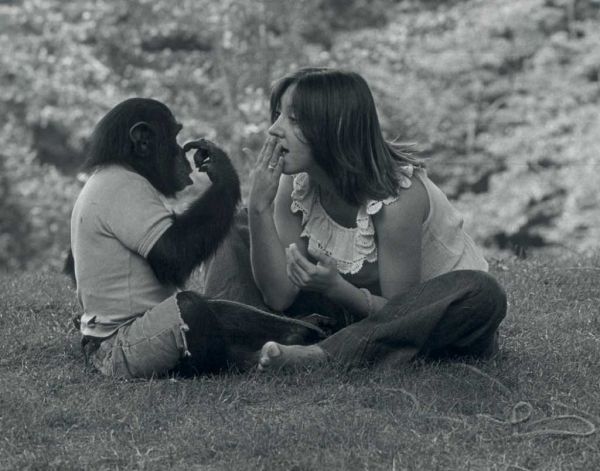“Men have forgotten this truth,” said the fox. “But you must not forget it. You become responsible, forever, for what you have tamed.”
—Antoine de Saint Exupéry, The Little Prince
Perhaps Herbert Terrace, professor of psychology at Columbia University, and director of the experiment that is the subject of Project Nim, a new documentary by James Marsh, never read The Little Prince. The sad story of Terrace’s irresponsible treatment of Nim, the chimp he tamed—or more strictly, whose upbringing in a human family he organized—is the guiding thread of this revealing film, which raises important issues about the distinction between humans and animals, about our attitudes toward animals, and about scientific objectivity (or the lack thereof) in behavioral research.
Nim was born in a primate research center in Norman, Oklahoma. His mother, Caroline, was treated as a breeding machine—all her babies were taken from her for use in experiments. She knew the routine well enough to turn her back to humans as soon as her baby was born, presumably hoping that they would not notice him. But how can a chimpanzee hide her baby, when she lives in a bare cage? Nim was taken from her a few days after his birth, to be used in Terrace’s experiment testing whether sign language could be taught to a chimpanzee. (His full name, Nim Chimpsky, was a play on the name of the linguist Noam Chomsky, who had suggested that only humans have the ability to learn language.)
The film, which draws on Elizabeth Hess’s fine book Nim Chimpsky, overplays the novelty and significance of Terrace’s research. It neglects the real pioneers in this field, the psychologist Keith Hayes and his wife Cathy, who in the 1950s tried to raise a chimpanzee called Vicki as a child, to see if she would learn to speak. The attempt failed, but in 1966 another pair of psychologists, Beatrix and Allen Gardner grasped that the failure may simply have been due to the inadequacies of chimpanzee vocal chords for forming words. They therefore brought up an infant chimpanzee, Washoe, in their own home, using American Sign Language to communicate not only with Washoe, but, when Washoe was present, with each other. Washoe learned many signs, using them singly and in combinations that appeared to be sentences. She even invented some of her own terms, like “candy fruit” for watermelon.





